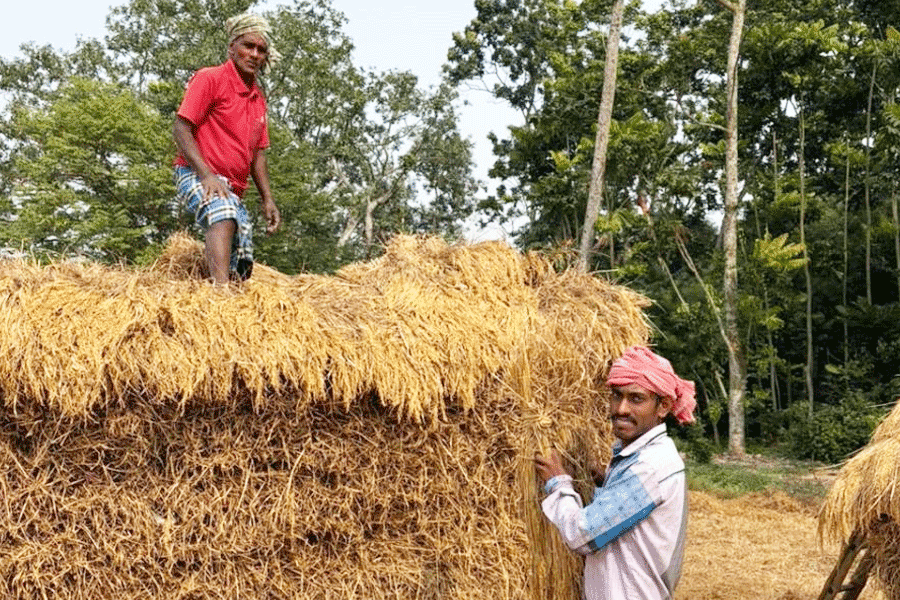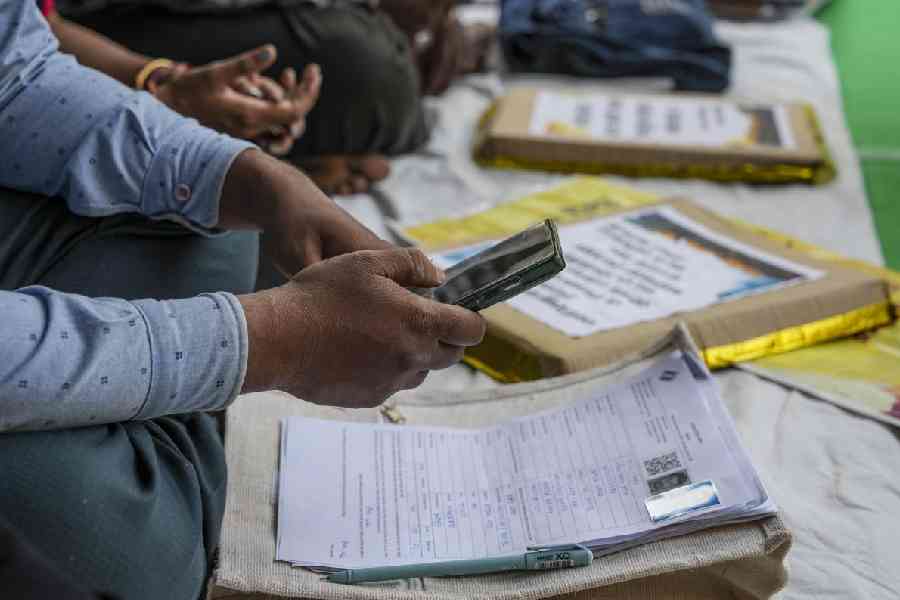As we contemplate India’s growth outlook amidst the challenges of Donald Trump’s tariffs, their potential damages to exports and investments dominate the public discourse. But the other key macroeconomic aggregate — savings — escapes our attention. The sustained deterioration in the national saving rate is of equal concern and a macroeconomic constraint. Gross savings represent the finances available for investment and a shrinking pool implies less is available for creating fixed assets necessary for economic growth. Scaling up investments beyond this limit implies borrowing capital, which is only possible up to sustainable levels without risking instability. Thus, a falling savings rate portends slower future growth.
For several years now, economists and analysts have routinely expressed concern about the consistent drop in the gross savings rate since 2011-12. The long-term trend is sobering. By 2019-20, or before the pandemic, the national savings rate had dropped 5 percentage points below its 2011-12 level to 29.6%. Proportionate to gross national disposable income, the appropriate measure to benchmark savings behaviour, the corresponding decline was 29.1%. Approximately four-fifths of the pre-pandemic drop occurred in 2013-14 and in 2019-20. The former was a crisis year while in the latter GDP growth decelerated sharply — a 2.6 percentage points decline in a year — to 3.9%. This reflects the association between saving and income: hard times dent the surplus that households put aside for future needs as they struggle to maintain essential expenditures.
The pandemic saw a bounce back to 30.8% of GNDI in 2021-22, a 1.7 percentage points recoup above the 2019-20 level. But that did not last long. Economic recovery and a burst of spending drew these down fast, a feature observed worldwide. With normal settings, Indian households have reverted to their former saving behaviour — increasingly saving lesser proportions of disposable incomes. The latest official estimates show aggregate savings moderated to 30.3% in 2023-24 below the 2017-19 average (31.5%) when GDP grew an average 6.6%. We do not know how the savings variable moved in 2024-25 as the data are released with almost a year’s lag. Analysts and policymakers typically overcome this problem by a simple but rough derivation from provisional GDP figures combined with balance-of-payments statistics from the Reserve Bank of India. Using this method, we estimate that domestic savings further lowered to 30.2% of GNDI last year, a small decline in the year.
Households contribute most to the national savings pool — the figure was approximately 59% in 2023-24. Assuming a similar share in 2024-25 — a low probability as GDP growth slowed by a magnitude similar to that of 2019-20 — there’s a steep decrease from 2011-12 (68.2%). Household savings ranged around 17.8% of GNDI in the last two years (remember that 2024-25 is based on assumptions and a crude approximation), a significant fall from 23% in 2011-12 and even lower than the 18.8% in 2019-20 when GDP growth was at its weakest in the period.
Thus, households account majorly for the savings decline. They are also borrowing more each year. In the last two years, financial liabilities shot up to approximately 6% of GNDI from a five-year range of 4% before, and almost double that in 2011-12 to 2016-17. Increased debt support is not necessarily bad as it enables consumers to smoothen income fluctuations. However, a sudden overshoot amidst a longer trend of less saving with deteriorating incomes straining household budgets is unsustainable for long and can slow down consumption and growth in the next round. For context, per person consumer spending outpaced disposable income growth per capita by a non-trivial 2.3 percentage points last year while real per capita income growth slowed sharply as persistently high inflation, especially food that dominates the consumption basket, squeezed purchasing capacities. Concurrent developments — tighter prudential norms and regulations by the RBI, rising defaults on unsecured and micro loans, credit cards, and waning demand for personal loans — are pointers to deteriorating financial health. It is not surprising that net financial savings by households decreased to 5% of GNDI in 2022-24 from the 7%-7.8% range between
2011-12 to 2019-20. Indications are that household surpluses are less likely, therefore.
What does the savings decline portend for investment and future growth?
We can look at the rate of gross capital formation (GCF excludes inventories and valuables and captures all investments — public, private and direct foreign). This was a provisional 29.9% of GDP last year, a steady fall from 30.4% and 31.2%, respectively, in the preceding two years and insignificantly different from that attained in 2018-19 when it was supplemented by net capital inflow of 1.8%-2%. Gross capital formation has been almost stagnant, with moderate declines in the last three years.
It must be flagged that the saving-investment estimates exclude ‘discrepancies’ in the national income accounts — these are large and negative (-1.8% to -2% of GDP) since 2022-23. If these ‘errors and omissions’ remain similar in final adjustments, both savings and investment rates would be further reduced. But even if we discount the preliminary data inferences and assume that eventual changes were to be zero or marginally positive, the trend decline in domestic savings is unmistakable. It now seems to be structural. The critical challenge of an increasingly limited savings pool for investment and growth not only persists but also seems to be magnifying.
The macroeconomic identity holds that an excess of investment over savings reflects as deficit in the current account (net capital inflow). If we consider the accepted macroeconomic framework — this limits the current account deficit to a sustainable 2%-2.5% of GDP — the burden of financing investments primarily devolves upon domestic savings. Higher investment rates based on unsustainable current account deficit levels in the past have invariably pushed the country to the brink of an external crisis.
The implications are straightforward. Unless the falling trend in savings is arrested, indeed reversed, stepping up investments could be risky. Not to say anything about the cost of capital that would inevitably rise if both public and private sectors were to compete for the same shrinking pool of savings. Increasing efficiency through careful policy design is important as raising domestic savings amidst an economic slowdown may be difficult.
Renu Kohli is a macroeconomist and former staff, RBI and IMF. Views are personal










